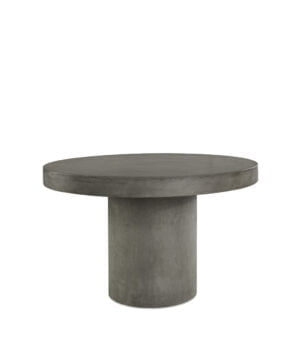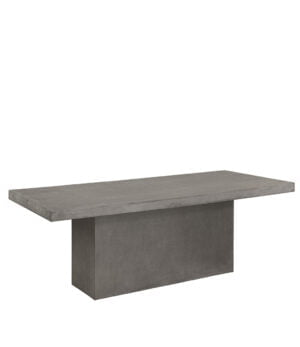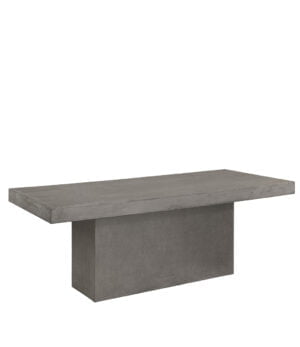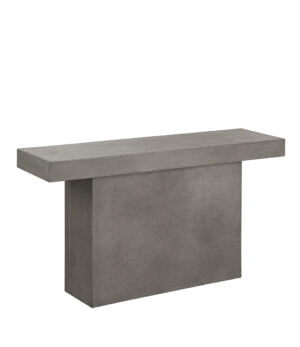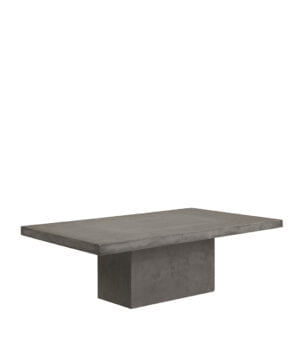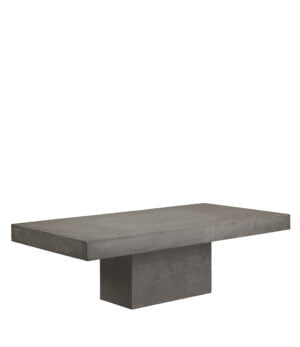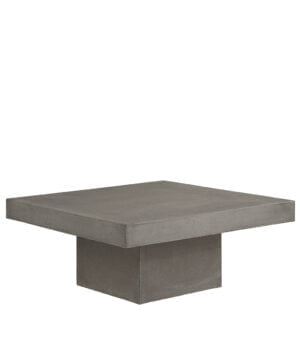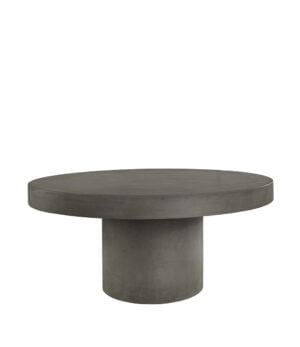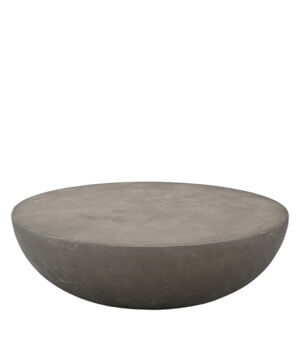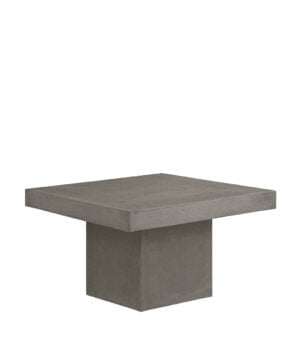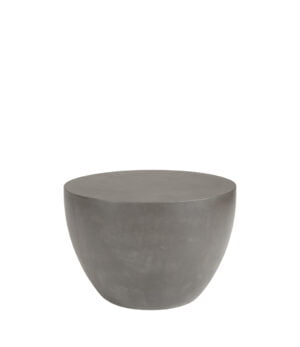Concrete tables in different styles
As you can see, Artwood offers concrete tables in different styles and for different uses. Our range includes dining tables, coffee tables, side tables, and end tables in concrete, for both living rooms, dining areas, and outdoor spaces. Further down, you can read more about what applies to concrete tables outdoors.
Concrete Tables for Different Styles
Concrete is a beautiful material that often gives a quite raw impression, but there are concrete tables in different styles. For example, we have several concrete tables with wooden legs that soften the impression a bit. We also have beautiful concrete tables with exciting, sculptural shapes that really stand out in the room.
Texture – the Interior Designer’s Secret Trick
When decorating with concrete tables at the dining area or the sofa group, you can use one of the interior designer’s secret tricks to make the interior extra interesting: mix textures, meaning different types of materials and surfaces.
Hard concrete that can feel quite raw and rough, for example, plays well with soft textiles such as curtains, pillows, and throws. A large, lovely rug under the dining area or the sofa group is another way to let contrasts in textures create a harmonious whole.
Similarly, flowers and candlesticks or candle lanterns on the table can add that soft, living dimension. A basket or tray in wood or a stack of beautiful books are other ways to give the concrete table a more cozy expression.
If the concrete table is on the outdoor patio, dining chairs in wood or a lovely rattan lounge sofa can have a similar effect.
The Natural Material Concrete
Concrete is a natural material that can vary in appearance. The color can vary from lighter to darker gray and even the structure can differ slightly. Because the concrete is hand-cast, the thickness of the tabletop can also vary a bit between tables. No concrete table is like the other, and it is precisely all these variations that make concrete such a beautiful, living material!
The concrete tables are made of granite stone flour, cement, and jute fibers mixed with water. When the concrete has hardened, it is hard but porous with many natural small cavities. To avoid dirt from penetrating the material, we treat all Artwood’s concrete tables with wax. Be extra careful with the table during the first time when the furniture is new, as the surface is most sensitive.
Care instructions for indoor concrete tables
As mentioned, Artwood’s concrete tables are waxed, so when you receive your new table, it has a good basic protection. For continued good protection, you should wax the table once during the first two months after purchase, and then regularly every three to six months. Spray Wax provides good protection and is easy to use.
To clean the concrete table, simply wipe it with a slightly damp cloth. Avoid dishwashing detergent that has a drying effect and instead use soap that re-fattens the surface. You can mix your own soap water with 1 part soap and 4 parts water. After wiping the table, it’s good to let the surface dry completely before putting anything on the table.
Concrete tables are extra sensitive to spills like red wine, vinegar, juice, and pure alcohol. Try to wipe away spills immediately so that they don’t penetrate the concrete and leave stains.
Never use abrasive or cleaning products that contain acid, bleach, or ammonia, as this will damage the concrete surface.
Outdoor concrete tables
Concrete tables are durable and heavy, making them suitable for outdoor use on a balcony or patio. If the table is left outside in all weather, it will eventually develop a beautiful patina. Regularly soap the concrete table to protect the surface.
Some concrete tables can be left outside all year round, but always double-check what applies to the table you’re interested in. If you choose a concrete table that can be left outdoors, you should still clean and oil the table before winter. This prevents moisture from penetrating the material and causing frost damage. You can use regular olive oil that you rub in with a cloth. Continue to oil until the concrete no longer absorbs the oil and is thoroughly saturated.
If you store the concrete table for winter, do not cover it with plastic or tarpaulin as the concrete needs to “breathe.” Also, do not leave pots or other furniture on the surface and make sure that snow and ice cannot remain on the table.
If you want to be on the safe side with outdoor concrete tables, store them frost-free and under cover during the winter (in Sweden usually October-March).
Do you see any concrete tables here that you want to take a closer look at? Then you are warmly welcome to one of Artwood’s resellers.

